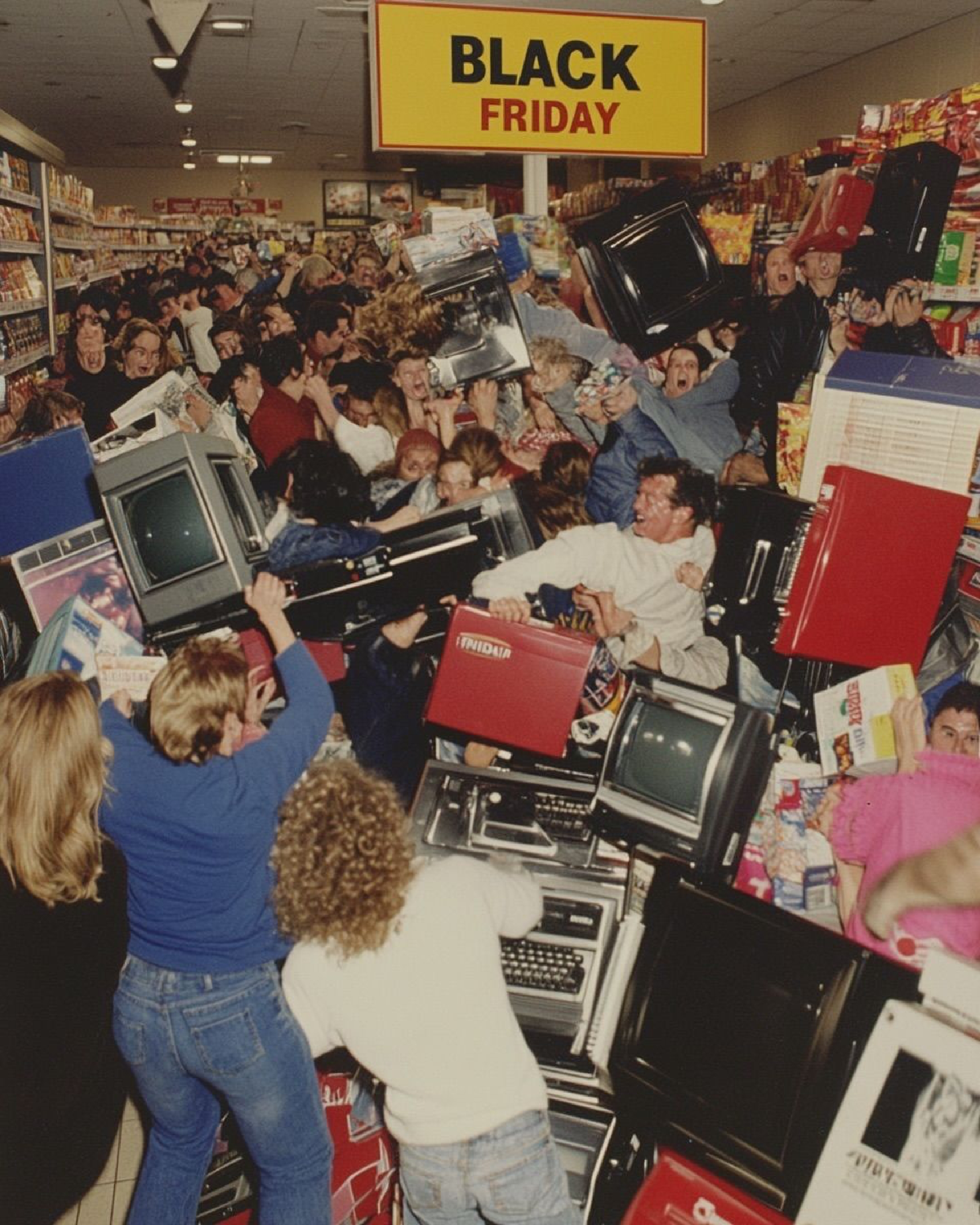The 2025 holiday season is shifting earlier and becoming more competitive. Shoppers are starting their Christmas preparations sooner (28% of UK consumers have began holiday shopping earlier than before), and key sale events (October deals, Black Friday, Cyber Monday) now span several months. Consumers remain budget-conscious yet value experiences: surveys show 77% of shoppers will seek cost-effective deals this season and UK data reports people still “splurge” selectively on premium items (e.g. M&S saw strong early sales) even as value-focused discounters thrive. Omni‑channel shopping dominates: over half of US/UK adults both research and buy online, while 30% of UK shoppers plan to split time equally between online and in-store. Smartphones drive much of this growth (more than 50% of holiday purchases), and younger consumers blur lines by browsing social apps for gifts (nearly half of Gen Z plan to use social commerce for Christmas shopping). With these trends in mind, successful holiday campaigns must start early, span digital and physical channels, and emphasize value-driven, emotionally resonant messaging.
Campaign Planning & Timeline
Plan well ahead. Start preparing your holiday campaign about 2–3 months before the festive season. Look back at last year’s results — which products sold best, which channels performed well, and when traffic peaked — to see what worked. Set clear goals (like increasing revenue, market share, or new customers) and decide how much to spend on each channel. Make sure everyone knows their responsibilities and deadlines for creative content, offers, media buying, and logistics.
Keep key dates in mind:
- US shoppers focus on Thanksgiving week (Black Friday/Cyber Monday).
- UK and EU shoppers look out for Boxing Day sales.
- In 2025, Hanukkah and Christmas both fall on Wednesdays, which could affect weekend shopping habits.
Suggested Timeline
August–September 2025:
- Finalise your overall holiday strategy and creative theme.
- Prepare your email systems (IP/domain) so your messages don’t get blocked, and design your campaign templates.
- Start early “teaser” emails and social posts to build excitement — almost half of shoppers prefer brands that begin their festive campaigns by late summer.
- Book influencers and affiliate partners now, as popular slots get snapped up quickly.
- Check stock levels, supplier timelines, and order popular items early to avoid running out. Use last year’s data to forecast demand.
October 2025:
- Focus on building your contact lists and remarketing. Run paid social or Google ads to get more email sign-ups — offer early-bird discounts or a gift guide as an incentive.
- Publish holiday gift guides and themed collections on your website and social channels.
- Optimise your SEO for seasonal searches (e.g. “Christmas gift ideas”, “Black Friday deals UK”) and make sure product feeds and listings are up to date.
- Finalise your paid ad creatives, budgets, and targeting for the Black Friday–December period.
- Send your first festive email to loyal customers and VIPs by late October to catch early shoppers.
Early November 2025:
- Step up your promotions.
- Send the first wave of holiday newsletters with early deals (like “Early Black Friday” offers).
- Increase paid search and social activity with gift-specific themes (“Gifts for Mum”, “Stocking Fillers”).
- Activate Pinterest shopping ads by uploading your product catalogue.
- Start sharing holiday-themed posts and countdowns on social media.
- Update your stores with festive decorations and displays.
- Make sure customer service is ready for busier traffic — 73% of shoppers say they’ll abandon a brand if their social media queries aren’t answered.
Mid–Late November 2025:
- This is peak promotion time.
- Run your Black Friday and Cyber Monday campaigns across all channels, focusing on big discounts and bundle deals.
- Keep engagement high with user-generated content, contests, and influencer posts.
- Track performance daily and adjust ad spend or stock levels as needed.
- Begin targeting last-minute shoppers as December approaches.
December 2025:
- Keep your campaign momentum going right through to Christmas.
- Run “12 Days of Deals”, flash sales, or countdown offers to create a sense of urgency.
- Tailor messaging by region — highlight Boxing Day offers in the UK/EU, and focus on guaranteed delivery dates in all markets.
- Share gift ideas by recipient (“For Dad”, “For Colleagues”, “Stocking Fillers”).
- Set up post-purchase emails for order confirmations, delivery updates, and upsell offers.
- After Christmas, quickly switch to clearance and New Year sales, and promote exchange options or referral programmes for the next year.

Creative Branding & Messaging
Craft a cohesive holiday brand identity. Develop a festive visual theme (colors, logos, imagery) that is consistent across all channels. For example, use holiday motifs (snowflakes, ribbons) and brand-guided color palettes in your content. The theme should evoke the season’s emotional core: nostalgia, warmth, and togetherness (holiday marketing “calls upon the strong emotional connection we feel toward end-of-year traditions”). Tell a story around your brand’s holiday offering, spotlight heartfelt, family-centered scenes or causes. Consumers increasingly value meaningful gifting: campaigns with handcrafted, artisanal, or charitable angles resonate well (For instance, emphasize sustainable products or give-back promotions.)
Balance emotion with clear value messaging. Highlight deals and promotions prominently (especially during this cautious economy), but temper urgency with joy and goodwill. Your tone can shift by market: UK campaigns often favor clever or heartfelt humor (think John Lewis ads), while US audiences may respond to sentimental storytelling or family narratives. Localize copy and design – e.g. mention “Black Friday” and Thanksgiving imagery for US ads, but “festive countdown” or “Boxing Day” offers for UK/EU. Remember small details: even your holiday packaging and shipping notifications carry your brand message. Include personalized touches – for example, add a custom holiday-themed shipping box and a handwritten thank-you note in each order.
Encourage user-generated content and community spirit. Prompt customers to share photos or videos of your product in their celebrations. Feature customer stories or run a contest with a holiday hashtag. Behind-the-scenes content also humanizes your brand: share images of your team’s holiday preparations or give sneak peeks of an upcoming Xmas collection. These tactics build authenticity and engagement during the season.
Digital Marketing Strategies
Email Marketing
Your holiday emails should be smart, personal, and well-timed. Start by dividing your mailing list into groups – such as highly engaged shoppers, inactive customers, VIPs, and general subscribers. Create tailored content for each one (for example, exclusive VIP deals or win-back offers for lapsed customers).
Make sure your email domain is properly “warmed up” so it can handle higher sending volumes without being flagged as spam. Use your emails to connect with other channels too – let subscribers know that your Black Friday deal is also available in-store or on social media.
Personalisation is key. Include the customer’s name, relevant product suggestions, and localised offers. Shoppers now expect brands to treat emails like a personalised conversation – just as they do on social media.
Timing matters:
- September: Finalise templates and automation (such as birthday messages and abandoned-cart reminders).
- October: Launch welcome emails and teaser campaigns for early sign-ups.
- Early November: Send your first festive newsletter, offering early access to loyal subscribers.
- Late November–December: Keep building momentum with gift guides, limited-time deals, and countdown offers.
Add interactive elements like GIFs, polls or live voting to boost engagement – a tactic that brands such as Kate Spade have used successfully.
Test send times to find what works best. Although mid-morning often gets high open rates, research shows holiday emails can also perform strongly in the evening (around 9pm). If you have global audiences, schedule sends by time zone.
Finally, plan post-holiday emails in advance – thank-you messages, return instructions, and New Year offers – so you can focus on running your campaigns smoothly during the busiest weeks.
Social Media Marketing
Social media becomes a virtual shop window during the holidays – around 80% of people say they use it for gift ideas or purchases.
Tailor your approach to each platform:
- Instagram and Facebook: Use eye-catching holiday imagery, stories, and shoppable posts.
- Pinterest: Create gift inspiration boards – it’s a top platform for festive planning.
- TikTok: Share creative short videos, challenges, or behind-the-scenes clips. (Over half of 18–29-year-olds plan to use TikTok for holiday shopping.)
Keep your posts visually consistent with your holiday theme. You could design a special festive filter, frame, or template to strengthen brand recognition.
Boost engagement with warm, seasonal visuals. For example, a luxury brand recently repurposed its winter ad across YouTube, TikTok, and Instagram for a seamless festive campaign. Encourage customers to share their own holiday photos featuring your products, and run simple contests or giveaways (like, tag, or share) to increase reach.
As budgets tighten, shoppers are more likely to respond to social promotions, freebies, and discounts.
Make sure your product catalogue is uploaded to Facebook, Instagram, and Pinterest so users can shop directly through your posts. Pinterest, for instance, sees millions of new “holiday boards” created every week – tag your products and add conversion tracking to measure success.
Use live shopping events or stories with product links to drive sales. Monitor trending hashtags (e.g. #GiftGuide, #HolidayShopping) and join the conversation.
Above all, treat social media as a customer service channel too – reply quickly to comments and messages, and use chatbots if needed to manage high volumes.

Paid Advertising (Search & Social)
Competition for ad space soars in the final quarter, so budget accordingly. Bid on festive search terms such as “Black Friday tech deals” or “Christmas gifts for her”, and make sure your ads promote clear seasonal offers.
Enable features like Google Shopping, Merchant Promotions, and Meta’s product catalogue ads to showcase discounts directly in search results or feeds. Keep your product data fresh so “Available Nearby” ads show accurate stock for last-minute shoppers.
Segment ads by country, region, and audience. For example, use holiday-themed copy for UK and EU audiences (e.g. Boxing Day sales) and adjust timing for each market.
Run dynamic retargeting ads that show users the products they viewed but didn’t purchase. Create different ad sets for gift-givers versus returning customers, and use lookalike audiences based on your best buyers.
SEO & Content Marketing
Optimise your website for seasonal search traffic. Update titles, headings, and descriptions with festive keywords like “2025 Holiday Sale” or “Christmas Gift Ideas”.
Create dedicated landing pages for your gift guides, promotions, or product categories. Publish blog posts and articles that match holiday search intent – such as “Top 10 Gifts for Dad” or “Easy Holiday Recipes” – and share them widely via email and social channels.
Ensure your site can handle increased traffic, and check that your most important pages are crawlable. Add product schema so Google can display rich shopping results. Keep your Google Merchant and Bing feeds up to date and use promotional extensions to show discounts in search results.
If you have physical shops, update your Google Business Profile with holiday hours and enable local inventory ads to bring nearby customers into store.
Influencer & Affiliate Marketing
Influencers play a huge role in holiday buying decisions – around two-thirds of shoppers say they’re more likely to buy from a brand they’ve seen an influencer use.
Choose influencers who naturally fit your audience (e.g. a parenting creator for toys or a lifestyle blogger for home décor). Plan campaigns such as festive unboxings, gift guides, or live shopping streams, and provide them with unique codes or affiliate links to track performance.
Secure partnerships early – space fills up fast. Send sample products by October and supply clear creative briefs, suggested captions, and hashtags.
Work with affiliates or publishers to feature your products in holiday round-ups and newsletters, and coordinate with your paid ads team to boost visibility around that content. Segment influencer activity by audience type – for example, “gifts for him”, “home inspiration”, or “luxury stocking fillers”.
Personalisation & Retargeting
Today’s shoppers expect a personalised experience. Use customer data to deliver tailored product recommendations and messages.
On your website, add “Recommended for You” carousels based on browsing behaviour or past purchases. In emails, include product suggestions, use their name, and trigger automatic follow-ups for abandoned carts or price drops.
Segment your audience further – send accessory suggestions to recent buyers and “we miss you” offers to inactive customers.
If possible, use AI-powered recommendation tools to refine personalisation. Even simple touches like a thank-you email after a purchase can build loyalty and make your brand stand out.
Customer Engagement & Support
Customer service is critical during the festive rush. Many shoppers reach out through social media, and most will switch brands if their messages go unanswered.
Prepare by expanding your support team or using chatbots for common questions (like delivery times or returns). Clearly display shipping deadlines and return policies on your site and in confirmation emails. A flexible, transparent return process helps convert hesitant buyers.
Keep customers engaged beyond purchases. Try fun ideas like digital advent calendars, daily challenges, or user-generated photo contests. Offer loyalty rewards such as “double points days” or members-only sales.
After purchase, send thank-you notes, request reviews, or recommend complementary products to turn one-off shoppers into repeat customers.
Offline & Experiential Strategies
Your in-store experience should reflect your online brand. Decorate shops with festive lights, music, and interactive displays to create a warm, memorable atmosphere.
Host special events like late-night shopping parties, product demos, or children’s “meet Santa” days to draw in crowds. Train staff to upsell gift wrapping or bundles, and equip them with tablets to help customers check stock or order online.
Creative activations can generate buzz – for example, eye-catching window displays, large-scale props, or community events such as charity drives or workshops. These experiences often double as great social media content.
Don’t overlook traditional marketing: physical catalogues, mailers, and posters can still inspire purchases, especially locally. Send out postcards announcing Black Friday or Boxing Day offers to nearby customers.
In the UK and Europe, Boxing Day (26 December) remains a major retail event, so plan clearance or promotional campaigns in advance.
Finally, tie everything together. Use QR codes in-store that link to your website, and keep your visual style and messaging consistent across every touchpoint – online, in print, and in person. A seamless, festive experience builds trust and drives conversions.
Holiday Campaign Checklist 2025
- Strategic Planning: Finalize holiday goals, budgets, and KPIs by late summer. Audit last year’s holiday performance (best-selling products, peak traffic sources) to inform this year’s plan.
- Creative Assets: Develop a unified holiday theme. Prepare all creative assets early (banners, email templates, social posts, print materials. Build a content calendar covering key dates (see below). Create gift guides, themed graphics, and videos in advance.
- Targeting & Messaging: Segment audiences (by behavior, demographics, gift recipients) and plan personalized messaging for each. Define region-specific copy (e.g. Thanksgiving vs Boxing Day). Craft email subject lines and ad copy that emphasize urgency or value. Account for language/localization for international markets.
- Digital Setup: Upload product catalogs to all ad platforms (Facebook, Pinterest, Google Shopping) and enable promotion extensions. Install tracking pixels/tags to measure conversions. Warm up email sending domains and test deliverability. Optimize website SEO (holiday keywords, fast loading, mobile usability).
- Media Launch: Schedule paid campaigns early. Reserve digital ad inventory for peak days and define bid strategies for major events. Coordinate influencer posts with campaign dates. Plan social ads to complement organic holiday content. Use affiliate networks and niche sites for product round-ups.
- In-Store Prep: Order seasonal decor and signage. Train staff on holiday promotions and upselling. Set up gift-wrapping station if possible. Stock gift-ready displays and bundles. Confirm extended store hours and holiday staffing.
- Engagement Tactics: Plan contests or giveaways on social (e.g. #12DaysGiveaway). Prepare UGC prompts (ask customers to share festive photos for a chance to win). Ensure chatbot scripts and FAQ pages cover holiday topics (shipping deadlines, return policies). Ramp up customer care resources (live chat, hotline) for high message volume.
- Logistics & Fulfillment: Double-check inventory for bestsellers; forecast demand from analytics. Coordinate with suppliers to avoid stock issues. Clearly communicate shipping cutoff dates in all channels. Offer BOPIS or curbside pickup options to alleviate shipping strain. Streamline return/exchange processes (preview return policy in marketing material).
- Monitoring & Flexibility: Track campaign metrics daily. Be ready to pivot creative or channels if performance lags. Adjust ad spend based on ROI. Collect customer feedback and respond quickly to issues.
- Post-Holiday: Schedule post-Christmas emails now (Thank You notes, New Year promos, cross-sell recommendations). Prepare for Boxing Day/January sales. Evaluate results against goals and document learnings for 2026.







.svg)


.svg)
.svg)






